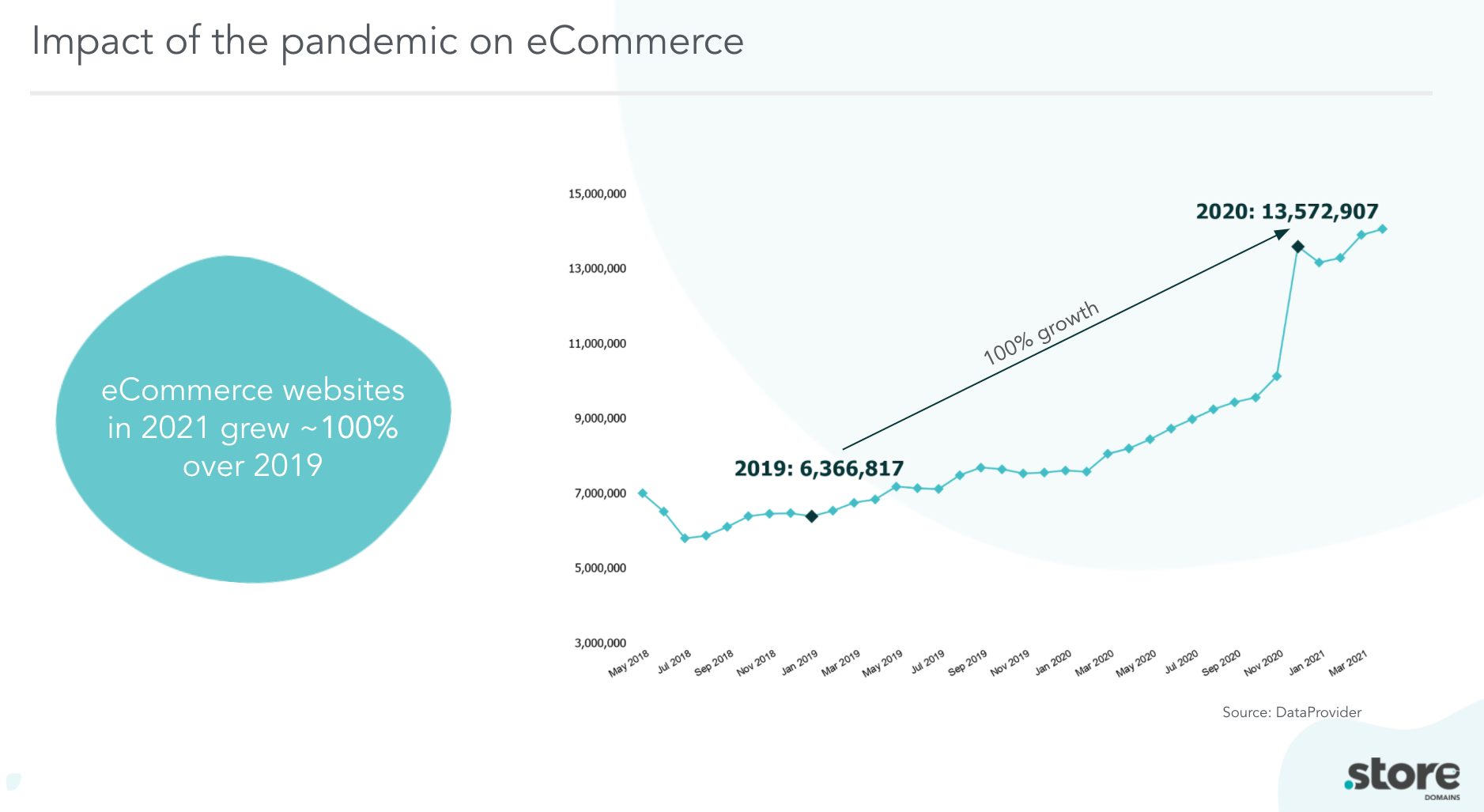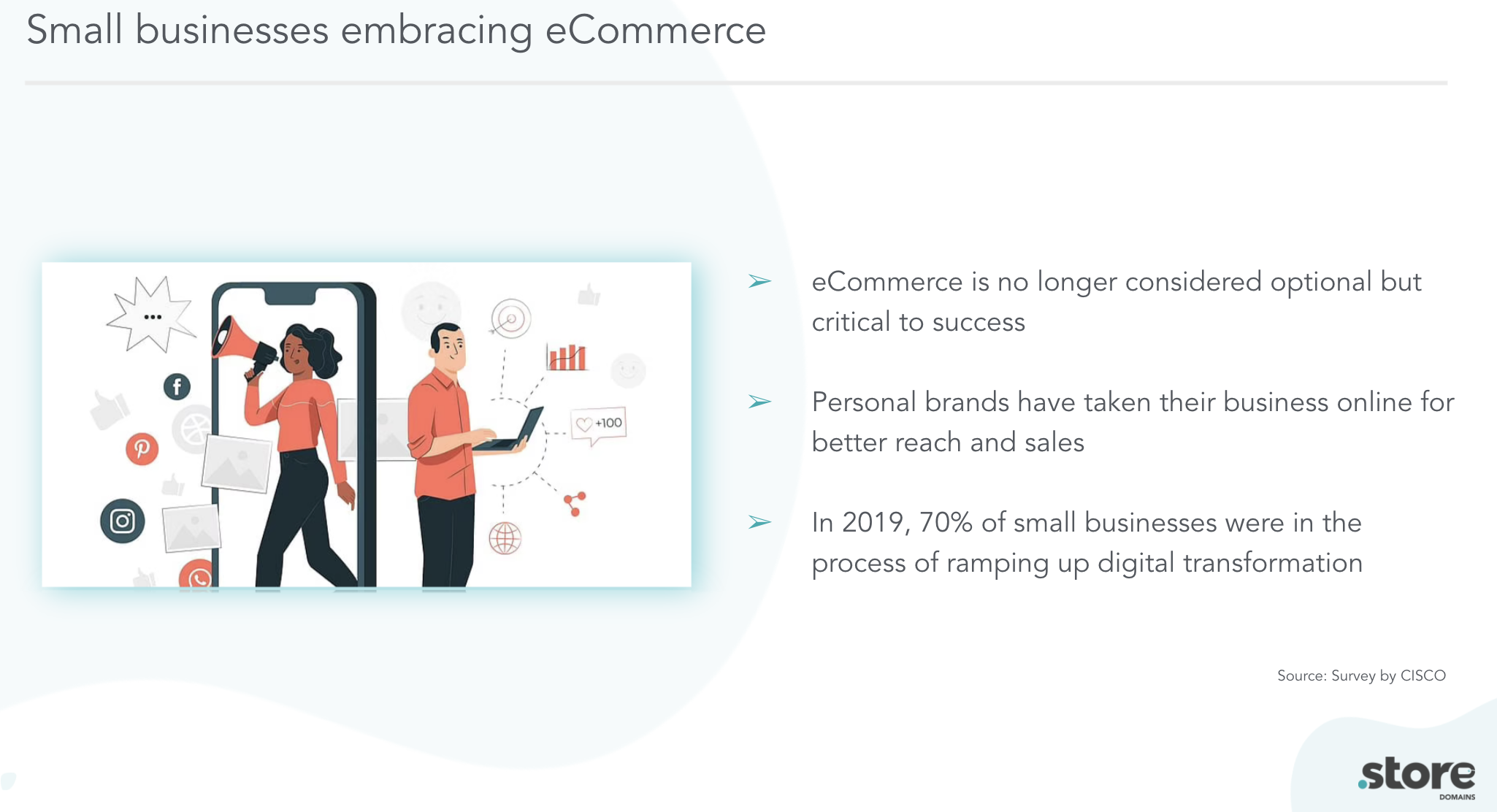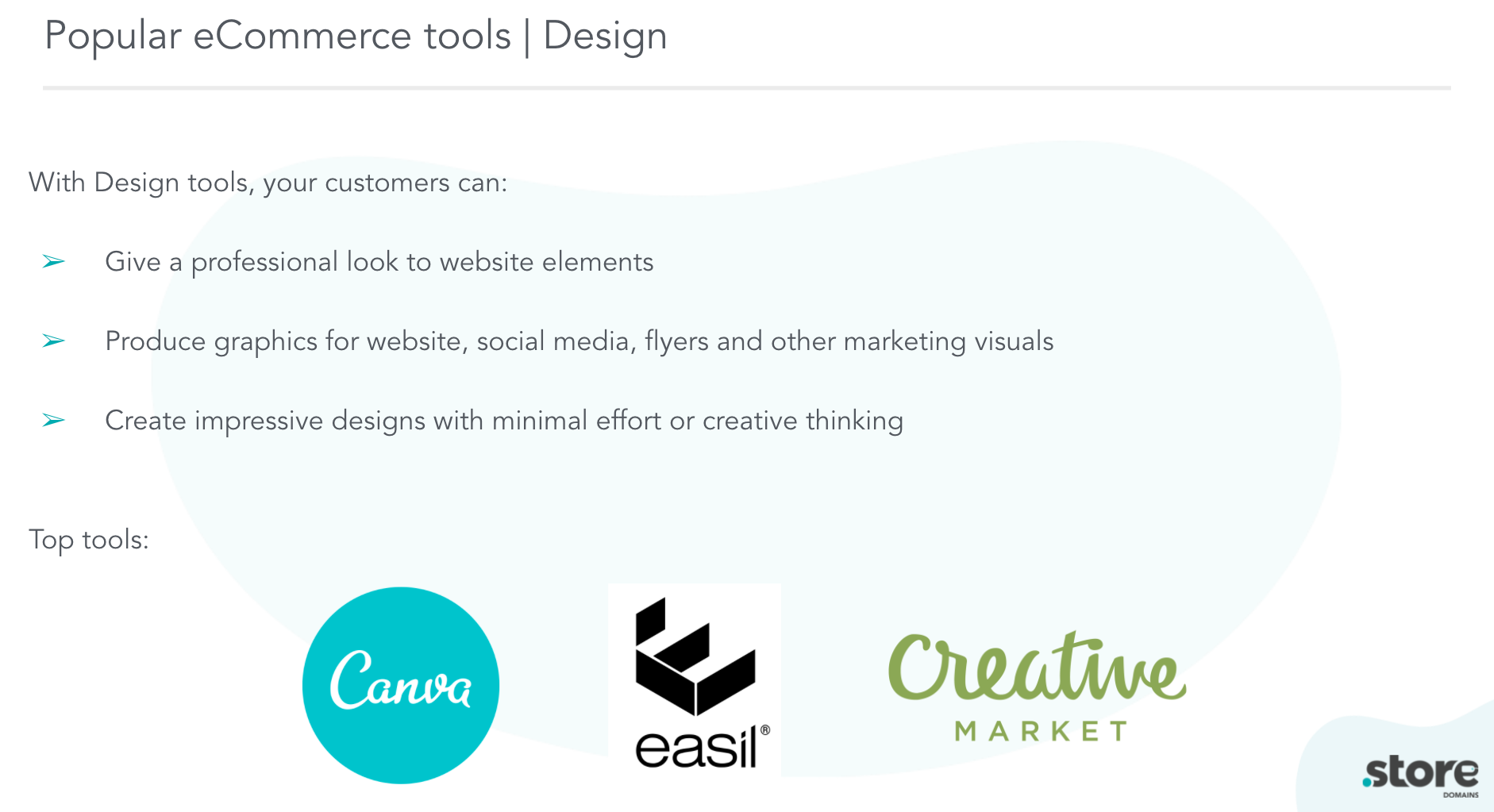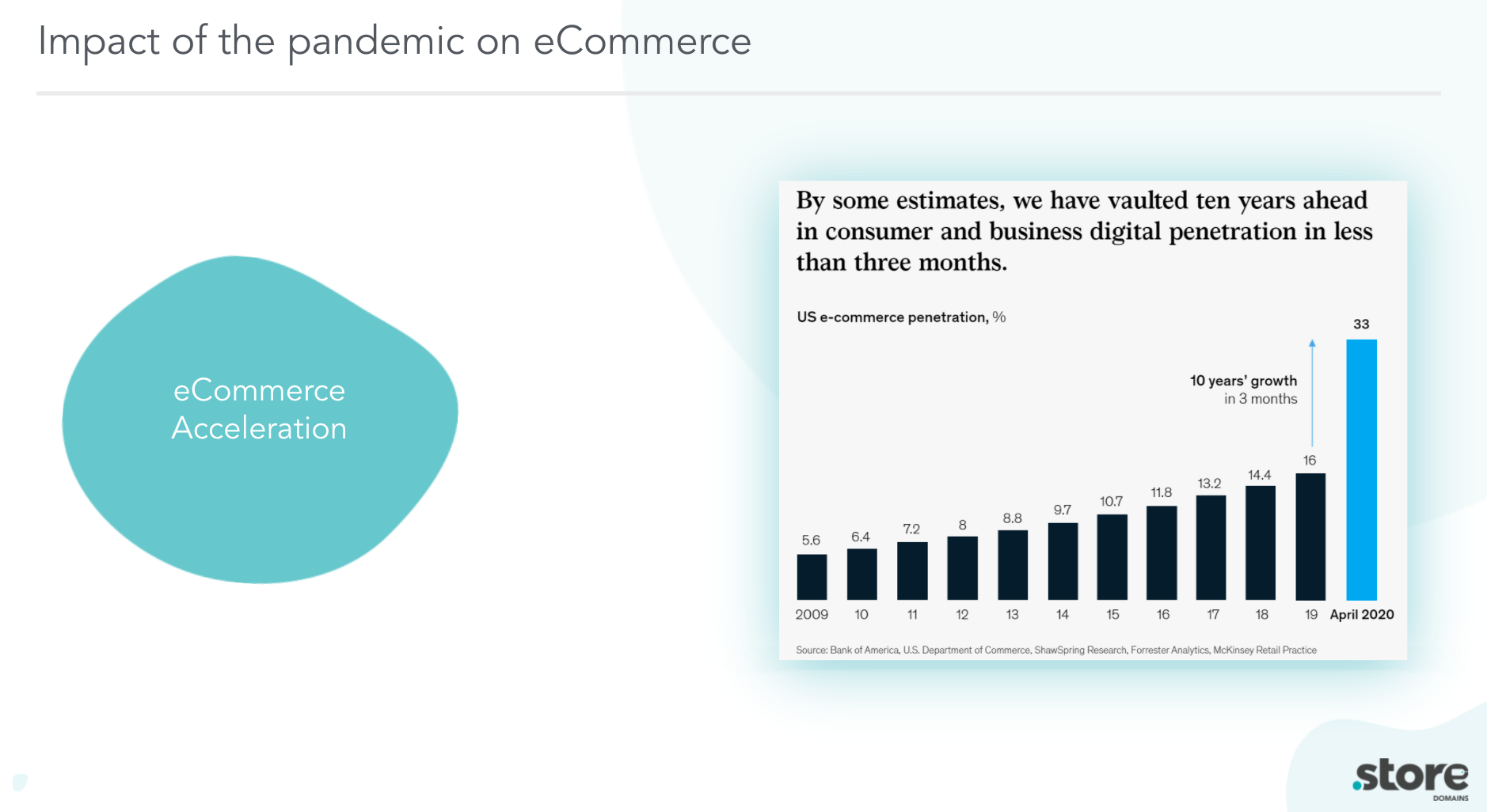The pandemic has impacted all lives and businesses, some more than others. One major change that many of us experienced was an increased reliance on home deliveries and online ordering. So it’s no surprise that e-commerce has been one of the most heavily impacted industries.
To unpack just how big the impact on e-commerce was, we recently held a live event as a joint initiative with .Store Domains (owned and operated by Radix). The session was hosted by Neha Naik, Head of Channel Partnerships at Radix, and Kim Garst, CEO of KG (Kim Garst) Enterprises and renowned online-business strategist.
If you missed it, here’s a quick summary from the virtual event, which highlighted the e-commerce-related opportunities that have opened up for web service providers in the post-pandemic world.
Growth in the e-commerce industry

The pandemic accelerated digital progress, which opened up opportunities in the e-commerce industry:
| Pre-pandemic | Post-pandemic | |
|---|---|---|
| Global e-commerce industry value | Pre-pandemic $3.535 trillion (2019) | Post-pandemic $5.424 trillion (expected in 2022) |
| % of total retail sales attributed to e-commerce | Pre-pandemic 13.6% (2019) | Post-pandemic 19.5% (expected in 2022) |
| Total digital buyers globally | Pre-pandemic ~1.9 billion (2019) | Post-pandemic ~2.1 billion (expected in 2022) |
| Rate of increase in e-commerce websites (YoY) | Pre-pandemic 23% (in 2019 over 2018) | Post-pandemic 100% (in 2020 over 2019) |
| Number of e-commerce websites | Pre-pandemic ~ 7M (2019) | Post-pandemic ~14M (2020) |
| Growth in .store domain registrations (YoY) | Pre-pandemic 46K domain names registered in Q2 2019, at 25% growth (in 2019 over 2018) | Post-pandemic 106K domain names registered in Q2 2020, alone, at 126% growth over Q2 2019 |
E-commerce will only continue to grow, leading to a greater demand for digital services as well as e-commerce enablement tools.
What does this mean for web service providers?

Web service providers can use this boom as an opportunity to grow and expand by:
- Building additional e-eommerce tools into their offering to provide a seamless, one-stop-shop experience for online store owners
- Leveraging existing third-party e-eommerce tools by building out integrations
- Diversifying their customer offering to attract more customers
Offering more services allows web service providers to build a stickier customer base, boost their customer lifetime value, and create long-lasting customer relationships.
It’s not only the first-time website owners who present a huge opportunity. There are also those who are looking to move their e-commerce website to a new platform or domain. Website migrations are quite the undertaking, and by providing tools and services to create a smoother transition, you can attract customers from competitors and provide them a positive experience right from the get-go.
What types of e-commerce business tools can web service providers offer their customers?

For any e-commerce business owner, building a website is the beginning of their entrepreneurial journey. From there on, they need to find ways to bring in traffic, scale, and engage. Offering integration with services like those listed below can deepen your relationships with existing customers and attract new ones:
- Design tools like Canva and Easil
- Email Marketing tools like ActiveCampaign and MailChimp
- Customer Service tools like ZenDesk and Monday.com
- Referral tools like Talkable and PartnerStack
- Fulfillment tools like ShipWire and ShipStation
Keeping pace with the growth in e-commerce

If it seems like the e-commerce industry has grown at an unprecedented rate, it has. A report by McKinsey claimed that 10 years’ worth of digital progress was achieved within the first three months of the lockdown. IBM said the pandemic resulted in 5 years of digital progress. Adobe said it was between 4 to 6 years.
The bottom line is that this growth has led to new opportunities in the e-commerce sector. And it is on us, the enablers of digital progress, to step up our offering and capabilities to help the business owners of today and tomorrow set up and scale their e-commerce business.
This post was sponsored by our partners at Radix, the registry behind some of today’s most popular new TLDs, including .store.
